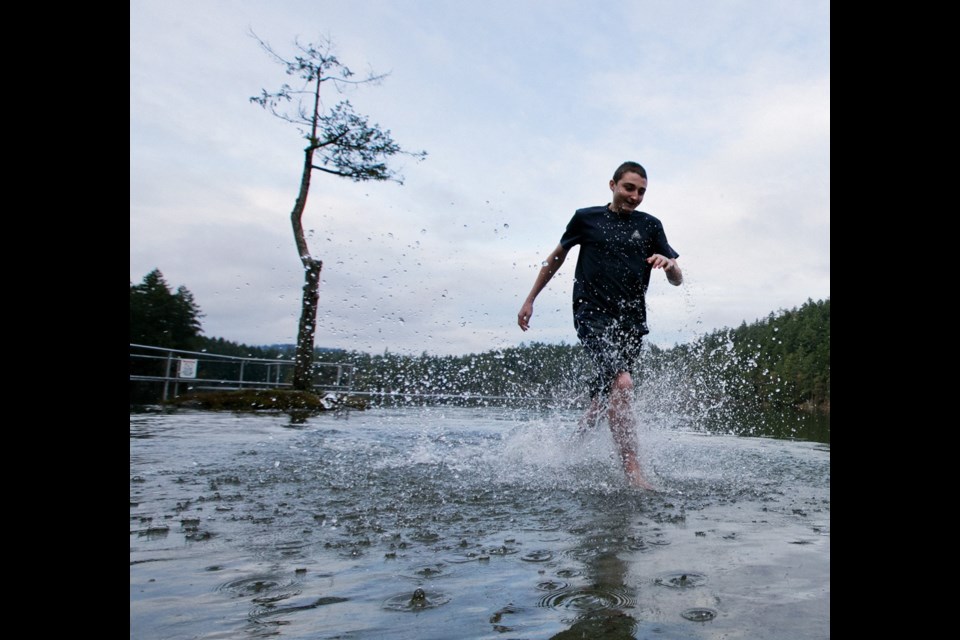Hundreds of polar bear dip enthusiasts will plunge into Thetis Lake on New Year’s Day instead of Elk-Beaver Lake, where a potentially poisonous algae bloom is flourishing.
A blue-green slimy bacterium that can cause sickness in humans, and can be deadly for animals if swallowed, was first spotted at Elk-Beaver Lake on Dec. 18.
The Capital Regional District said Monday that tests taken at Elk-Beaver Lake’s Brookleigh boat launch continue to be positive for blue-green algae bloom. That has caused the 38th edition of the annual polar bear swim to be moved to Thetis Lake, beginning at 2:30 p.m. on Wednesday. Penny Hill, a volunteer for Scouts Canada, said the polar bear swim is a vital fundraiser for the Greater Victoria chapter.
The blue-green algae known as cyanobacteria, which grows in shallow and slow-moving or still water, has plagued Elk-Beaver Lake for decades, said Rick Nordin, a water quality expert with the Capital Regional District.
Some advisories describe symptoms of swimming in a blue-green algae bloom as a skin rash or eye irritation and said swallowing contaminated water could cause flu-like symptoms.
Dr. Murray Fyfe, Island Health’s medical health officer, said flu-like symptoms is too broad a term. “The difference in symptoms would be dependent on dose,” Fyfe said. “If someone swallowed a smaller amount of water with less concentrated toxin, they may experience headaches, nausea, vomiting.
“In the event that a larger dose of toxin was swallowed, then more severe … symptoms would develop. You can’t tell the level of toxin present just by looking at the water, so it is best to keep out of water with the blue-green algae blooms.”
The algae can occur naturally. Nordin said the cause in Elk-Beaver Lake is likely nutrients from the soil in the watershed, including nutrients from nearby agricultural land and septic tanks.
The B.C. Environment Ministry, Saanich and the Capital Regional District have been discussing improving the lake’s water quality.
“It’s a slow process but the sooner you get started on some improvements, the better,” Nordin said. “It can be reversed. It’s not an impossible thing to do.”
For now, the quick solution needed is a massive windstorm to stir up the lake and cause the bloom to disappear, Nordin said.
View Polar bear swim in a larger map
Blue-green algae a natural process
• The thick soupy green-blue mass formed by bacteria is called a bloom. Some produce chemicals that are poisonous if swallowed.
• Common poisons produced by the algae bloom are neurotoxins and hepatotoxins.
• There was a positive neurotoxin test in Elk-Beaver Lake this year, which can affect the nervous and respiratory systems and can cause muscle tremors, stupor, staggering, rapid paralysis, breathing problems and, in extreme and rare cases, death — mostly in pets and livestock.
• Hepatotoxin was found last year that can affect the liver and can take days before symptoms appear after drinking affected water.
• There have been no known human deaths in the region related to the bloom.
— Source: B.C. Ministry of Health



